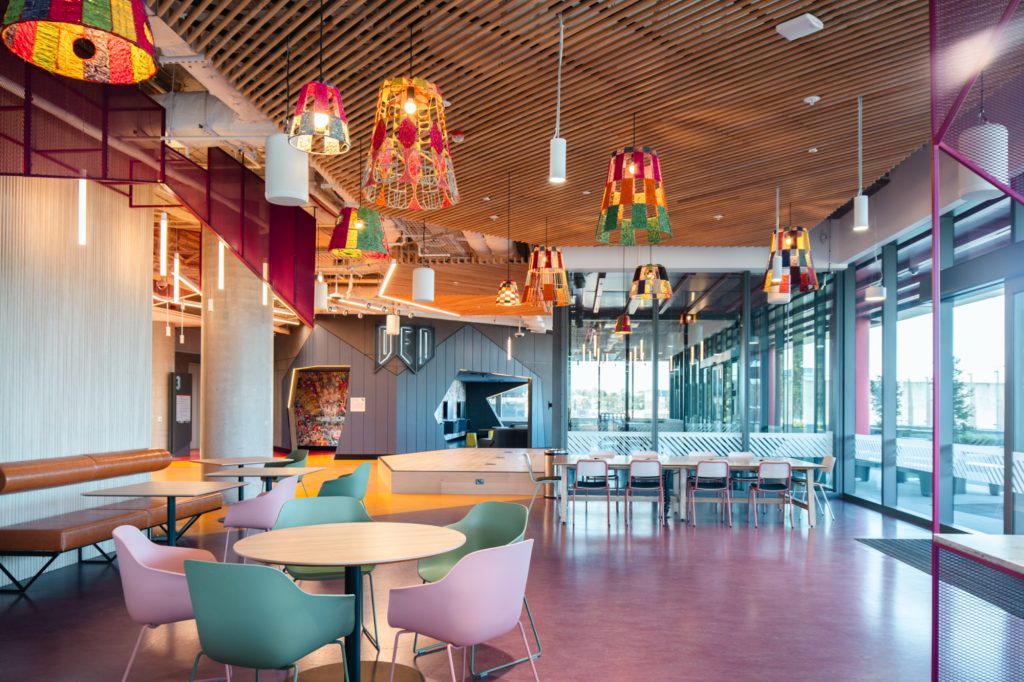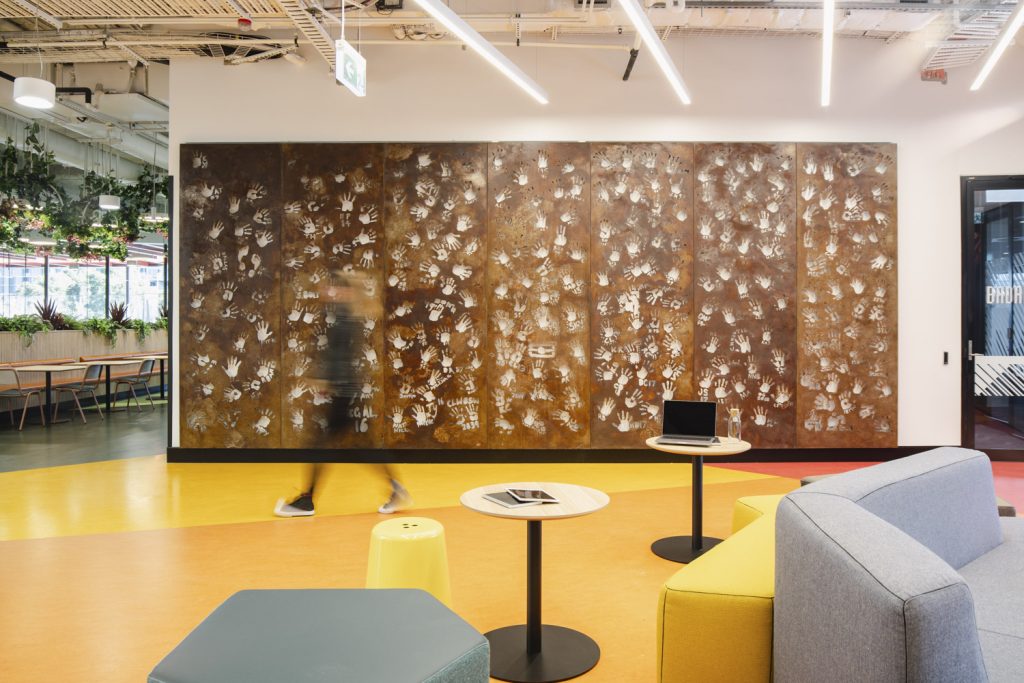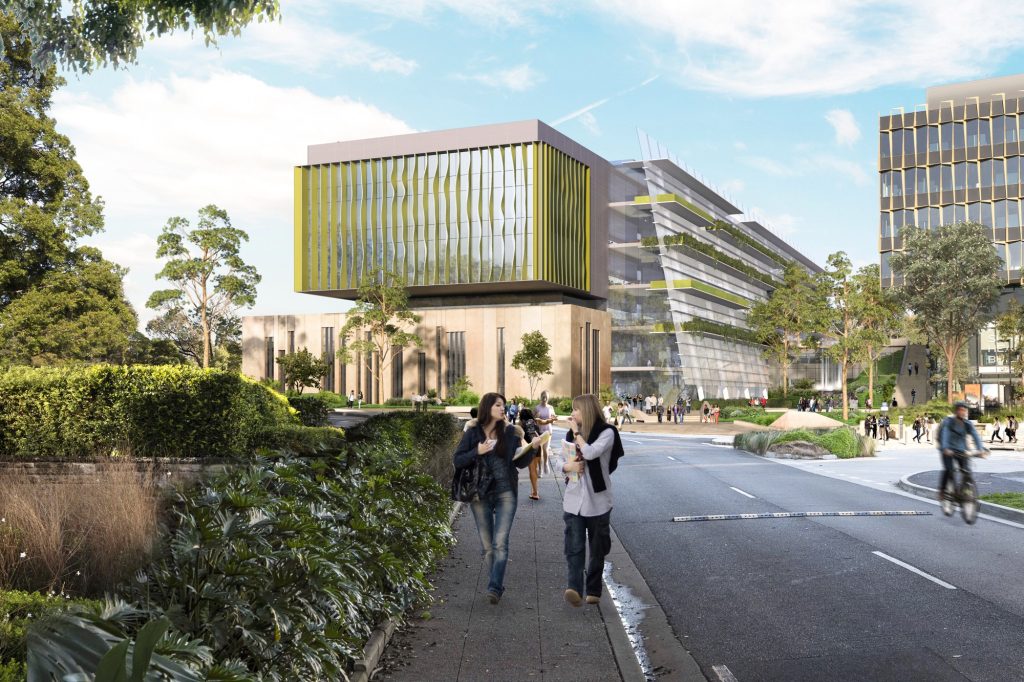
HDR’s six architecture and design trends for 2024
HDR’s six architecture and design trends for 2024
Share
HDR’s architecture practice – a champion of the future of the industry and partner of Australian Design Review’s 30UNDER30 Architects and Innovators of the Built World program – forecasts six trajectories of change for 2024.
Triple net-zero design
As populations continue to face climate change, biodiversity loss, waste and pollution, designers are being encouraged to rethink design processes and adopt a ‘triple net-zero’ design mindset within a circular economy framework: net-zero energy, net-zero water and net-zero carbon.
In 2024, three key principles will supercharge society’s transition from a linear economy to a circular one – designing out waste and pollution, keeping products and materials in use, and regenerating natural systems.
Designers are looking beyond embodied carbon and considering metric-driven targets for water, nutrients, air, biodiversity, and social and health categories too. We will likely see projects adopting waste-free systems that use renewable resources and energy; water-sensitive urban design integrating stormwater, water supply and sewage management into developments; and principles of passive design becoming second nature.

Social value
Demand is mounting for companies to demonstrate tangible benefits beyond financial measures and improve their triple bottom line.
The Federal Government’s ‘Measuring What Matters’ framework and WSP’s ‘Legacies that Last’ paper have set the stage for a new chapter of measurement that integrates profit, people and purpose into business-as-usual.
In 2024, measuring and quantifying the social value of architecture will no longer be just a value-add.
Moving forward, designers will be expected to go beyond the brief and consider the contributory role that infrastructure can play in improving interconnected social, economic and ecological systems.
Not only will they be required to build positive social outcomes into the fabric of projects from the outset, but they will be increasingly expected to produce measurable place-based social impact reports upon project completion, all while generating strong commercial outcomes.
Equity-driven design
Today, equity-driven design goes beyond architecture itself and places the community at the nucleus of the co-design process. This allows flexible, safe and comfortable spaces to be delivered for everyone who interacts with a building and its surrounding environment.
In 2024, designing through the lens of social equity will become even more commonplace. Designers will embed the full range of human diversity – from gender to culture, sexual orientation, age and ability – into projects more rigorously to provide innovative solutions to societal challenges.
Designing for neurodiversity will, for example, create high-performing teams and more inclusive workplaces. Meanwhile, designing more diverse, gender-neutral spaces will address the wider intersectionality of gender so that well-being can be promoted in all its forms.
Western Sydney University’s Bankstown City Campus’ universal design, for example, connects the campus to Country and its diverse community. The HDR-designed Rouse Hill Hospital masterplan has been guided by Connecting with Country experts Bangawarra, in consultation with knowledge keepers and Traditional Custodians, to inform the siting of the buildings, open spaces, site access points and circulation.

Maximising value through flexibility
A new New South Wales government directive will soon force developers to include affordable and social housing in high-density apartment developments built around priority public transport precincts to ease the housing affordability crisis. In this climate, clients are also considering how social infrastructure projects such as schools, hospitals and universities can be integrated with housing.
In 2024, designers will play an increasingly pivotal role in integrating places and precincts for flexibility and adaptability, as well as delivering shared, adaptive facilities that can transition to new requirements.
Moving forward, health facilities will more readily be integrated with key worker accommodation. Relationships could also be established with developers to provide air rights for residential housing above education facilities.
By integrating housing into social infrastructure and creating in-built populations that support surrounding activity and amenities, a double benefit will emerge. Attracting great minds and creating thriving districts can mobilise the economy and improve our social and cultural fabric.
Place-based innovation
Economic growth, community development, workforce evolution and exponential advances in medical sciences have culminated in clustered, place-based innovation in cities with a high concentration of intellectual, financial, social and cultural capital.
This year, new heartlands for business and industry will transform urban centres into dynamic innovation ecosystems that revitalise economies and improve population health and well-being outcomes.
Underpinned by design benchmarks such as critical mass, site permeability, spatial integration, access to primary services infrastructure, hyper-connectivity, community engagement and formal governance structures, innovation-powered precincts will deliver micro-neighbourhoods that support translational health science outcomes and work to solve some of the most complex medical challenges of our time.
A few Australian HDR projects are representative of this emergent paradigm shift, including the HDR- and Denton Corker Marshall-designed Sydney Biomedical Accelerator, Arden and Parkville medical precincts, and Boggo Road Innovation Precinct.

Towards hybrid intelligence
Architects are in a unique position to operate at the interface of data and design and create powerful new tools of innovation.
This year, designers will move further towards integrating human expertise and in-house tools with AI capabilities to streamline the design process. They’ll also explore a more extensive range of design possibilities and achieve enhanced outcomes on complex tasks such as architectural design.
Increasingly powerful machine learning text-to-image models will begin to transform the way architects communicate design and enable them to generate, modify and finalise visualisations in minutes.
Moving forward, this will facilitate a new level of ‘living’ collaboration that transforms conceptual and detailed design reports into architectural models and immersive design reviews whereby building stock is visualised in real-time using augmented and virtual reality. It will also enable AI-driven rapid optioneering and evaluation of masterplan options in real-time by test fitting for optimal building stock use.
Read HDR Australian design principal Simon Fleet’s case for contributory architecture.
You Might also Like
























